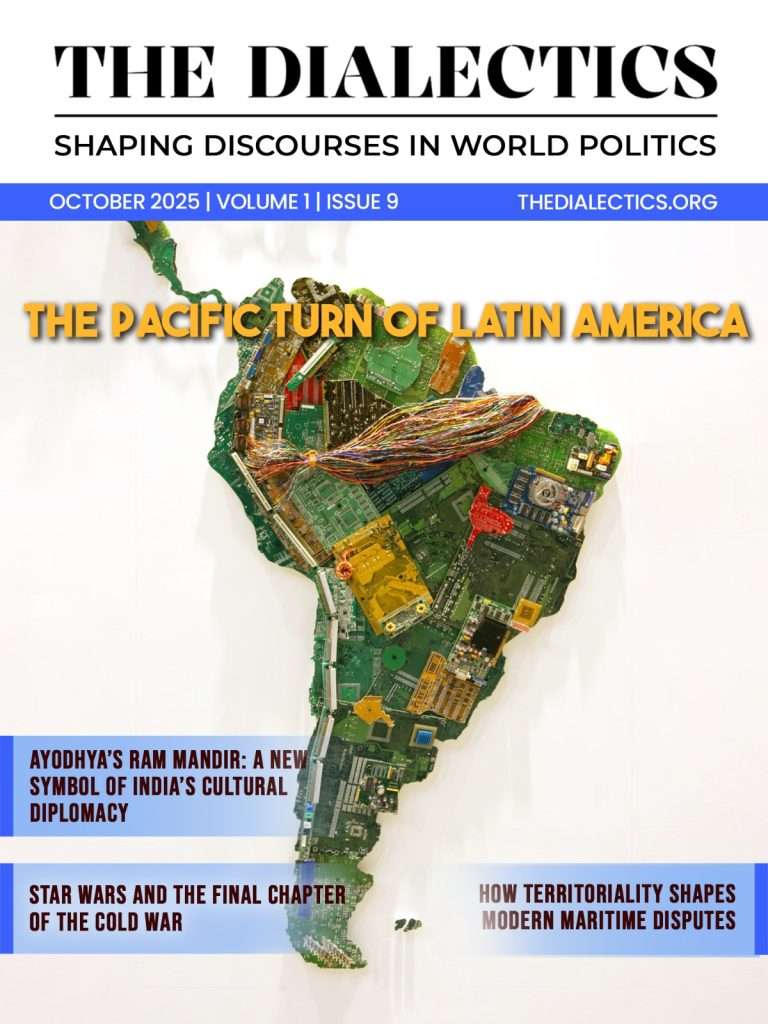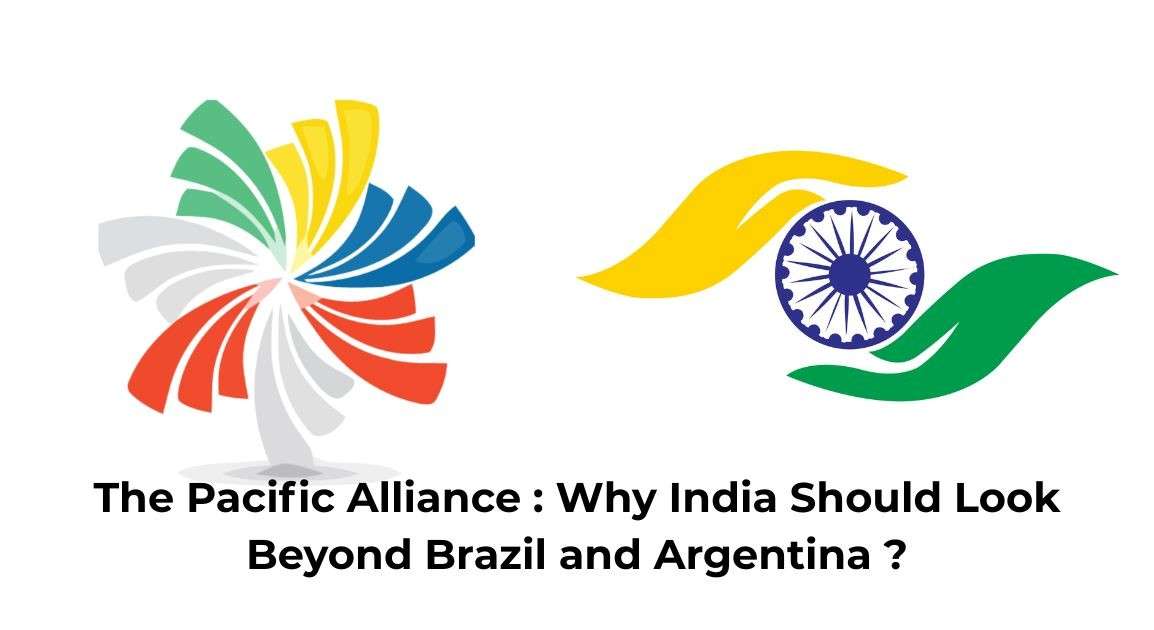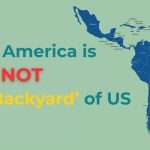Usually seen as a region very distant from India, Latin America has long shared Historical ties with India. During the 16th and the 18th centuries Spanish ships carried Indian goods from Asia to Latin America via the Philippines, in the 19th century Indian labourers were forced to migrate to the Latin American region as a matter of fact many Indian labourers have helped build the Panama Canal. Rabindranath Tagore’s friendship with Argentinian writer Victoria Ocampo symbolized cross cultural dialogue in the 20th century, Jawaharlal Nehru in 1927 participated in the Brussel’s international congress against imperialism as well through his writings such as his 1932 critique of the Monroe Doctrine he expressed his grievances against western exploitation
India and Latin America: From WW2 to Cold War
Post Independence India opened its first diplomatic missions in Brazil in 1948 and Argentina in 1949. Jawaharlal Nehru’s 1961 visit to Mexico and meetings with leaders like Fidel Castro further strengthened the ties. In the 1960’s Prime Minister Indira Gandhi’s tour of 10 Latin American countries marked a turning point as it led to agreements in science, education and nuclear energy cooperation, while opening new embassies in Peru and Venezuela. During the period of cold war India-Latin America relations were shaped by the Non-Aligned Movement.
Although Latin America is geographically distant from India, there have always been ties between the two regions. Yet, the relationship between the two never gained full traction as traditionally there is a perception among the people in Latin America that view India as a land of spiritualism and the Indian side have always viewed the region as Banana republics. India was in fact one of the first countries to initiate a dialogue mechanism with the Community of Latin American and Caribbean states (CELAC) on the sidelines of the UNGA along with Chile during the India-Rio group dialogue.
Beyond Argentina and Brazil
In today’s highly globalised world, connectivity is just a matter of time and not an issue. In fact in 2022 when India was falling short in edible oil it was countries like Argentina and Brazil that stepped in to help India. India’s traditional partners in the region have always mostly been Brazil, Argentina, Mexico, Chile and sadly this is also one of the reasons that India’s ties with the region has not grown significantly as compared with the growth of Chinese engagement in the region.
In order to establish deeper ties with the region India has to look at other countries rather than its traditional partners, recently we see the Indian government engaging with other countries in the region as the External Affairs Minister (EAM) of India went on a 9 day visit to Latin American countries in 2023. He was the first Indian foreign minister to make bilateral visit to Guyana, Panama, Columbia and Dominican Republic. At the same time Leaders from the Latin American countries have increased their visits to India as in 2014 President of Chile Michelle Bachelet visited India, in 2017 Tabare Vasquez President of Uruguay visited India or in 2020 when Jair Bolsonaro visited India as the chief guest of the Republic Day.
India is a safe alternative to US and China
Contemporary relations between the two regions are shaped by energy security, trade diversification among other areas. Trade between the two regions reached up to 50 billion dollars. Yet, this significantly lags behind the Chinese engagement in the region today. The Latin American countries are facing a dichotomy given the US-China rivalry as traditionally the region is seen as America’s backyard but today China’s mammoth of a presence in the region where from only January to March itself China’s trade with the region totalled 118.30 billion dollars while last year it exceeded 500 billion dollars, this has caused the Latin American countries an obstacle . At such a juncture India becomes the most suitable choice for the region to establish deeper strategic partnership; in order to achieve this the Pacific Alliance group can further deeply integrate India with the region.
The Pacific Alliance : Latin America’s Indo-Pacific Pivot
Today trade fragmentation and protectionism across major economies around the world are opening up new opportunities for trade agreements throughout the Global South countries, this in mind the Indo-Pacific region has become the focal point of geopolitics today. Invariably, the Pacific Alliance grouping which comprises Peru, Chile, Columbia and Mexico shares a long Pacific Rim making them an integral part of the Indo-Pacific, yet the Indo-Pacific construct or the definition of it along with its geography differs between countries as they look at the area through different perspectives. As India defines the region as free, open and inclusive Indo-Pacific, from the shores of Africa to that of the Americas as was said by Prime Minister Narendra Modi at the Shangri La Dialogue in 2018, the Pacific Alliance can act as a strategic Pacific anchor in India’s Indo-Pacific construct and at the same time bolster India’s presence in the Latin American region.
The Pacific Alliance was established in 2011, as per their official website. The Pacific Alliance plays the role of a strategic platform that is open to free trade emphasizing that it is an open and an inclusive integration process with high potential and business projection oriented towards modernity and pragmatism with a clear orientation towards Pacific Asia. Together these countries represent 38% of Latin America’s GDP, 50% of total trade and 45% of Foreign direct investment, eliminating almost 97% barriers to trade among the member countries with an aim to make it 100% by 2030.
Why is the Pacific Alliance Promising ?
As compared to other regional blocs like the MERCOSUR which has faced stagnation partly due to ideological clashes between countries like Brazil and Argentina, the Pacific Alliance has not only been able to financially integrate member economies through the Latin American Integrated Market (MILA) but is also actively engaging with its 63 observer state where India is also one. Panama and Costa Rica are on the track to gain full membership of the bloc. The member countries are continuously growing as we see that Chile is an OECD member with an high index of Ease of Doing Business, while Columbia and Peru are progressively growing. Mexico on the other hand falls under the global north and has always depended more on the US.
In Latin America only two countries have officially introduced the Indo-Pacific construct, Columbia (Action plan 2021-2022) & Chile (Defence Policy 2020) both of them have emphasised deeper strategic partnership with India. Chile and Peru are Copper and Lithium rich countries where Chile is also a part of the Latin America’s ABC Lithium triangle which is said to hold more than 50% of the worlds deposits, Peru on the other hand is about to sign a landmark deal with Saudi Arabia to develop its Lithium Brine Projects, its close proximity with the Lithium Triangle also highlights its opportunity in the untapped potential of Lithium mining partnerships.
India’s Existing ‘MNC Leverage’
Indian presence in the Latin American region today is burgeoning as can be seen with the presence of pharma companies like Cipla and Dr. Reddy’s and Tata Consultancy Services (TCS) has been time and again ranked as the top employer in Latin America by the top employers institute. A potential Free Trade Agreement between India and the Pacific Alliance will not only open their markets for Indian goods but at the same time open India’s huge consumer market for Latin American goods. India’s investment in the region does not come with any hidden intentions unlike that of China, at the same time the Chinese import more raw materials and export finished products to the region an FTA with India will not only help them diversify their interests but will also address the trade deficit between India and the region.
The Pacific Alliance is not rigid; instead , due to its liberal policies, it is very flexible and talks about connecting the Latin American market to Asia, not just their individual markets, showing the potential to grow in the region. This will also help India be more consistent in engaging with the region establishing a performing mechanism. Further integrating South-South cooperation India can address its energy security resilience to fuel its growth in the future at the same time the Pacific Alliance further integrates with Asia while diversifying its interests.
The scope between India and the Latin American region is vast such as India and Chile are soon going to launch joint research expeditions to Antarctica or be it India’s MoU with Argentina in Lithium exploration, the partnership between India and the region requires a working mechanism to ensure deals and projects are completed on a timely basis. The Prime Minister of India has recently visited Argentina in July 2025 the first by an Indian Prime Minister in 57 years indicating the importance India attaches with the region. While the Latin American countries which have always been said to face their back towards the Pacific have to start turning towards the Pacific, where the Pacific Alliance will play a major role in achieving the region’s Indo-Pacific strategy.




